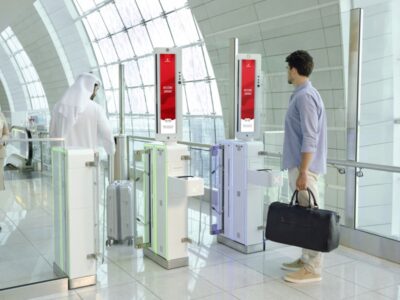In a region where the tourism industry is growing rapidly, food safety and quality assurance has become a key focus for Dubai Municipality, with every five-star hotel having to be HACCP certified by mid-2007. Unfortunately, there is still a lack of food safety understanding across the catering industry.
When properly implemented, a HACCP program can actually improve the profitability of a business, as it minimises wastage by focusing resources into those areas that are necessary.
However, you cannot put the cart before the horse; to effectively implement a HACCP program, a food business needs to follow a number of ‘Key Hygiene Rules’, which ensures good hygiene practices are followed by food handlers at all times.
The ‘Key Hygiene Rules’ range from taking the deliveries, to cooking the food. This month, we will look at the initial process, from the supplier to prepping food.
Suppliers
When looking for a product, a chef should always use approved suppliers. Food from any other suppliers should be rejected, and the manager notified.
Deliveries
If any goods are substandard; such as being out of date, or with too short an expiry date, they should be rejected straightaway. Additionally, damaged packaging or food that is infested with pests or shows signs of pest damage should be returned. Also, if a supplier substitutes foods not to the specification originally quoted, the store manager should notify the chef for approval.
When it comes to chilled food, it should not be delivered above 5°C, with anything over 8°C rejected. Frozen food, likewise, should be delivered at -18°C, with any deliveries above -12°C or -15°C for quick frozen foods also rejected. Once chilled and frozen deliveries arrive, they should be checked and moved to appropriate storage areas within 20 minutes of unloading.
Storage
Once the food has been delivered, it is imperative to store it in the correct conditions in order to maintain its freshness and prolong its shelf life. If there are any foodstuffs that need to be disposed of, they should be marked with the words ‘unfit food, not for human consumption’, along with the date. To prevent the risk of contamination further, it should be segregated from other foods.
In terms of the storage area, ventilation systems in dry good stores should never be obstructed, and the doors into dry storage areas should always be closed. Food ingredients in dry good stores should also be stored in pest proof containers, and any spillages should be cleaned up immediately.
Stock rotation should also be strictly adhered to, with all food dated on arrival, and a suggested use-by date also labelled. It is advisable that colour coded labels are used.
Next, when it comes to temperature-controlling food, refrigerators should always be kept below 5°C and dial temperatures should be checked every time the refrigerator is open. Additionally, at the start and end of each shift, the temperatures of each refrigerator should be recorded.
If the air temperature of the refrigerator is above 12°C, then carry out an in-between pack temperature check. If the in-between pack temperature is above 8°C then probe the food, and if the food temperature is above 8°C as well, it is important that you handle the food in the correct way. If the food has been at this temperature for less than four hours, return it to the right temperature and use as soon as possible. However, if you cannot ascertain how long the food has been stored above 8°C, then dispose of the food immediately.
For a freezer, the temperature should be maintained at -18°C. As above, if the air temperature of the freezer is above -12°C, carry out an in-between pack temperature check. If the in-between pack temperature is above -18 °C, temperature probe the food, and again, dispose of the food if it is above -18°C. It is also worth remembering that temperature probes should be cleaned using a detergent, and then rinsed and disinfected using probe wipes.
Preparation
The prepping of food is an important part of any pre-service operation, but it is also a time when hygiene standards slip, so it is imperative that back of house staff are aware of what to do. Preparing more food than can be stored is not advisable, as high-risk foods should not be left at room temperature for more than 30 minutes.
When it comes to temperature control, always ensure frozen raw poultry – or any other meat for that matter – is completely thawed prior to cooking, testing the meat for pliability and the absence of ice crystals can do this, or temperature probe the meat to ensure it is defrosted.
Precooked food, such as sausages, should not be stored at an ambient temperature for more than 15 minutes prior to reheating, and salad ingredients should be pre-cooled.
In terms of equipment, you should never use the same equipment or work surface for raw food and ready-to-eat food, unless they are thoroughly cleaned and disinfected; and even then, the same cloth should not be used. Cutting boards should also be used inline with a colour coding system, and most importantly, food preparation should be carried out in accordance with the linear flow system, so there is no cross contamination of raw and ready-to-eat food.
Although some of these hygiene rules are basic instructions, in order to be HACCP compliant all steps should be adhered to. But it is not just the delivery and storage, you also need to have strict regulations in place when it comes to cooking and reheating food, as well as service and most importantly, personal hygiene.







